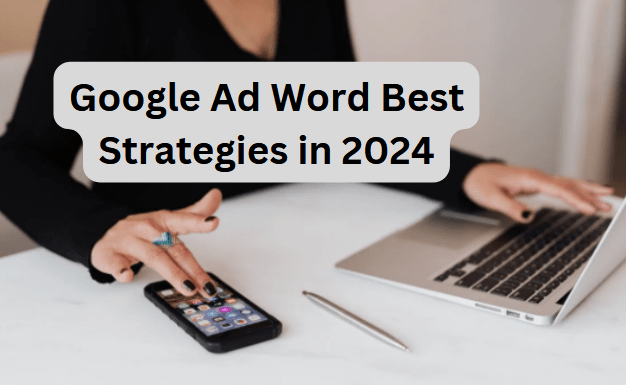Google Ad Word, commonly known as Google Ads, stands as a prominent online advertising platform meticulously crafted by Google. This dynamic tool empowers businesses to conceive and execute advertising campaigns across Google’s expansive network, encompassing search engines, various websites, and diverse platforms. In this post, I have listed in details from my experience over the years, top 10 key points of Google Ad Word.
Through Google Ads, enterprises gain the ability to strategically place and manage their ads, thereby optimizing their online visibility and outreach to target audiences.
Here Are Some Key Points To Google Ad Word:
1. Ad Types
• Search Ads: These appear on Google search engine results pages when users search for specific keywords.
• Display Ads: These are visual ads that can appear on a variety of websites within the Google Display Network.
• Video Ads: These ads appear on YouTube and other Google partner sites.
• Shopping Ads: These showcase products directly within search results when users search for specific items.
2. Keywords
• Advertisers choose relevant keywords related to their products or services.
• Ads are triggered when users search for those keywords.
3. Bidding
• Advertisers bid on keywords, and the highest bidder for a particular keyword generally gets the top ad placement.
• Different bidding strategies are available, such as cost-per-click (CPC) or cost-per-thousand-impressions (CPM).
4. Budgeting
Advertisers establish a predetermined financial allocation on a daily or monthly basis, aiming to regulate and manage their expenditure effectively. This budgetary framework serves as a pivotal tool in advertising campaigns, enabling advertisers to exercise a strategic and disciplined approach to their financial resources.
By setting specific limits on daily or monthly spending, advertisers gain greater control over their advertising costs, facilitating the optimization of their overall marketing strategy. This deliberate budgeting not only fosters financial prudence but also empowers advertisers to tailor their promotional efforts in alignment with their overarching business objectives.
In essence, the practice of defining and adhering to a set budget enhances the efficiency and efficacy of advertising endeavors, fostering a more targeted and resource-conscious approach to reaching the desired audience and achieving marketing goals.
5. Ad Rank
The placement of an advertisement is determined by its Ad Rank, a comprehensive metric that takes into account various factors to assess its relevance and effectiveness within the advertising ecosystem. Ad Rank considers three primary elements: the bid amount, the quality of the ad, and the anticipated impact of ad extensions.
• Bid Amount: The financial aspect of the Ad Rank involves the bid submitted by the advertiser. This bid represents the maximum amount they are willing to pay for a user to engage with their ad. However, it’s important to note that a high bid alone does not guarantee a top position; it is just one component of the overall Ad Rank calculation.
• Ad Quality: The quality of the ad is a crucial factor in determining its position. Search engines and advertising platforms evaluate the relevance and appropriateness of the ad content to ensure it aligns with user intent. High-quality ads are more likely to be displayed prominently, providing a better user experience.
• Expected Impact of Ad Extensions: Ad extensions are additional pieces of information or features that enhance the ad’s appeal and utility. The anticipated impact of these extensions, such as providing additional links, contact information, or other relevant details, contributes to the overall Ad Rank. Ads with compelling extensions are favored in the placement hierarchy.
6. Ad Extensions
Supplementary details can be incorporated into advertisements through the utilization of extensions, which encompass various elements such as site links, callouts, and location-specific information. These extensions serve to enhance the overall content and functionality of the ads by providing additional information that can be crucial for the audience.
For instance, site links enable advertisers to include direct links to specific pages on their website, offering users more navigation options. Callouts allow for the inclusion of brief, compelling snippets of information that highlight key features or benefits of the advertised product or service.
Furthermore, location information extensions enable businesses to showcase their physical presence by including details such as addresses and proximity, thereby catering to local audiences and enhancing the relevance of the ad. In essence, the integration of extensions not only expands the scope of information available within advertisements but also contributes to a more comprehensive and impactful user experience.
7. Targeting
Advertising campaigns have the capability to precisely target specific audiences by taking into account a range of factors. These factors include geographical location, demographic information, personal interests, and the type of devices individuals use.
By leveraging this targeted approach, advertisers can tailor their messages to resonate more effectively with their intended audience, ensuring that the content is relevant and appealing to the demographic they are aiming to reach.
This level of precision in targeting not only enhances the overall effectiveness of advertising efforts but also contributes to a more efficient allocation of resources, as marketing messages are directed towards those most likely to engage with and respond positively to the content.
8. Quality Score
Google evaluates the quality of advertisements through a metric known as the Quality Score, taking into account factors such as relevance and various other criteria. A superior Quality Score can result in more favorable ad placements, often at reduced costs.
This underscores the importance of creating ads that align closely with user intent and other key considerations, as it not only enhances the overall user experience but also contributes to the efficiency and cost-effectiveness of advertising campaigns on the Google platform.
9. Conversion Tracking
Advertisers have the ability to monitor and assess the effectiveness of their advertisements through the implementation of conversion tracking. This sophisticated tool enables advertisers to meticulously measure specific user actions, such as completed purchases, sign-ups, or any other predefined objectives.
By employing conversion tracking, advertisers gain invaluable insights into the success and impact of their ad campaigns, allowing for informed decision-making and optimization strategies based on concrete performance data.
10. Ad Campaigns
Advertisers strategically structure their advertisements into distinct campaigns, meticulously tailoring individual settings and outlining specific objectives for each. This deliberate organization allows advertisers to fine-tune their marketing efforts, ensuring that each campaign is aligned with its unique goals and parameters.
By categorizing ads in this manner, advertisers gain greater control over the optimization of their advertising strategies, allowing for a more nuanced and targeted approach to reaching their intended audience.
Video of Google Ads Tutorial 2024 (Full Beginner’s Guide):
This systematic arrangement not only streamlines the management process but also facilitates a more effective and efficient deployment of resources, ultimately contributing to the overall success of the advertising endeavors.
Google Ad Word, or Google Ads is a powerful tool for businesses looking to reach a targeted audience and drive relevant traffic to their websites. It’s important for advertisers to regularly monitor and optimize their campaigns to achieve the best results.




